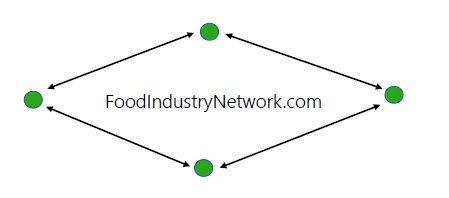South Bruce bumped by Ignace to host spent nuclear fuel deep geological repository

Ignace Township and Wabigoon Lake Ojibway Nation (WLON) will host Canada’s future deep geological repository (DGR) for spent nuclear fuel.
Read Also
![Pictured from left to right: Zone 6 Director Crispin Colvin, Zone 14 Director Vanessa Renaud, Zone 9 Director Mark Reusser, Mary Brander, Bobby Robinson, Kyla Lewis, and Alaina MacDonald at the OFA annual general meeting in Toronto on Nov. 26, 2024. [Not pictured: Kaylee Wells].](https://foodindustrynetwork.com/wp-content/uploads/2024/11/South-Bruce-bumped-by-Ignace-to-host-spent-nuclear-fuel.jpeg)
![Pictured from left to right: Zone 6 Director Crispin Colvin, Zone 14 Director Vanessa Renaud, Zone 9 Director Mark Reusser, Mary Brander, Bobby Robinson, Kyla Lewis, and Alaina MacDonald at the OFA annual general meeting in Toronto on Nov. 26, 2024. [Not pictured: Kaylee Wells].](https://foodindustrynetwork.com/wp-content/uploads/2024/11/South-Bruce-bumped-by-Ignace-to-host-spent-nuclear-fuel.jpeg)
Young leaders recognized by Ontario Federation of Agriculture
The Ontario Federation of Agriculture awarded five young people pursuing careers in agriculture each with a $2000 bursary. The undergraduate,…
“This is a historic moment,” said Laurie Swami, Nuclear Waste Management (NWMO) president and CEO, in a news release. “This project will solve an environmental issue and support Canada’s climate change goals. This is what making history looks like.”
^
Why it matters: NWMO will construct a multiple-barrier DGR system consisting of a network of placement rooms more than 500 metres below ground at the Revell site. This system will manage up to six million used nuclear fuel bundles long-term.
^
The consent-based site selection initiative, launched in 2010, saw twenty-two communities volunteer. They were whittled down to the WLON-Ignace and Saugeen Ojibway Nation-South Bruce sites through community engagement and extensive technical studies in 2020.
Ignace confirmed its willingness in July, and WLON followed in early November. Each community provided solid support. The South Bruce residents’ willingness referendum passed with a razor-thin majority, while the Saugeen Ojibway Nation had yet to decide.
“The WLON Regulatory Assessment and Approval Process (WLON-RAAP) asserts our sovereign rights while protecting our Anishinaabe values and laws,” said WLON Chief Clayton Wetelainen.
Kim Baigrie, the Township of Ignace mayor, said the announcement marks a brighter future for the community’s residents and youth for future generations.
“We will now begin to focus on being committed, dedicated, and fully engaged in the process to establish Canada’s first-ever deep geological repository,” Baigrie said. “To build up our community, our region, and the future prosperity of all of northwestern Ontario.”
The site selection decision was based on decades of research demonstrating the safety of a deep geological repository in Canada and globally, extensive site-specific safety assessments, and community engagement.
Wetelainen said the project would be subject to intense scrutiny from WLON’s regulatory process, the Impact Assessment Agency of Canada, and CNSC regulatory oversight.
“Wabigoon will ensure that safety, environmental protection, and Anishinaabe values are upheld throughout this process,” Wetelainen promised.
The 175-year, $26 billion project promises to provide new jobs and community investment driven by the priorities defined by Ignace and WLON.
Mark Goetz, mayor of South Bruce, congratulated the Northern Ontario community and focused on the selection process’s positive aspects for the municipality.
“Through its 12-year participation in the site selection process, the municipality has positioned itself to pursue alternative economic development opportunities,” he said in a press release. “South Bruce looks forward to exploring these opportunities to create success for future generations.”
In early 2025, the municipality will receive $4 million as an exit payment for participating in the site selection process and $4 million for declaring itself a willing host following its Oct. 28 referendum.
Carolyn Fell, NWMO South Bruce regional communications manager, said the leadership, time, and strong commitment to education to advance the siting project within the South Bruce and Saugeen Ojibway Nation communities were considerable and appreciated.
When asked what would happen to the South Bruce land purchased for the potential site, Fell stated that they are considering their next steps.
“We hope to maintain strong, respectful relationships with both South Bruce and the Saugeen Ojibway Nation moving forward,” said Fell in an email to Farmtario. “We will honour existing commitments as we consider our next steps in the process of winding down operations in the weeks and months ahead.”
Source: Farmtario.com

